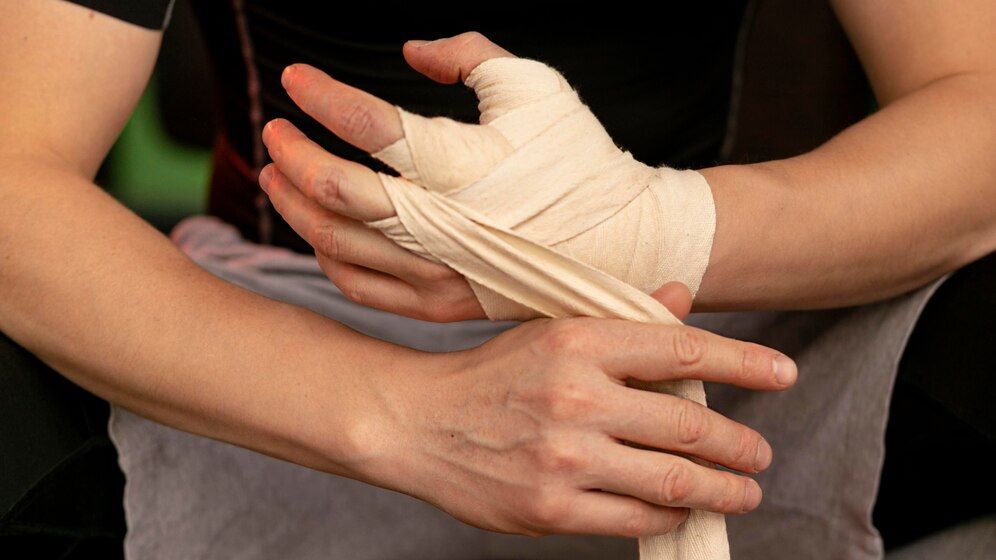
Suffering an injury due to someone else’s negligence can be a life-altering experience. From car accidents to slip and falls, personal injuries come in various forms, but they all share one commonality: the potential for significant physical, emotional, and financial repercussions. If you find yourself in such a situation, understanding how to navigate a personal injury case from start to finish is crucial to securing the compensation you deserve. In this comprehensive guide, we’ll walk you through each step of the process, empowering you with the knowledge needed to protect your rights and pursue justice.
What Constitutes a Personal Injury Case?
Before delving into the intricacies of handling a personal injury case, it’s essential to grasp the fundamentals. A personal injury case arises when an individual suffers harm, whether physical, emotional, or both, due to the negligence or intentional actions of another party. These incidents can encompass a wide range of scenarios, including but not limited to:
Car accidents
Slip and falls
Medical malpractice
Dog bites
Product defects
Regardless of the specific circumstances, the key elements of personal injury lawsuits typically involve establishing:
Duty of Care: The at-fault party owed you a duty to act reasonably and avoid causing harm.
Breach of Duty: The at-fault party failed to uphold this duty through negligent or reckless behavior.
Causation: The breach of duty directly resulted in your injuries.
Damages: You suffered measurable harm, such as medical expenses, lost wages, pain and suffering, or emotional distress.
Step 1: Seek Medical Treatment
Following an injury, your health should be the top priority. Even if you don’t believe your injuries are severe, it’s crucial to seek medical attention promptly. Delaying or forgoing medical treatment not only jeopardizes your well-being but also weakens your potential personal injury claim. Medical records serve as vital evidence in personal injury cases, documenting the nature and extent of your injuries, as well as the treatment received.
Step 2: Consult with an Experienced Personal Injury Lawyer
Once you’ve addressed your immediate medical needs, the next step is to seek legal guidance from experienced personal injury lawyers. Choosing the right attorney can significantly impact the outcome of your case. Look for a lawyer who specializes in personal injury law, has a proven track record of success, and offers a free consultation to discuss your situation.
During your initial consultation, the personal injury attorneys will evaluate the details of your case, explain your rights and options, and provide an assessment of the potential outcomes. This meeting is also an opportunity for you to ask questions, address any concerns, and gain a clear understanding of what to expect moving forward.
Step 3: Gathering Evidence and Building Your Case
With legal representation secured, the focus shifts to gathering evidence to support your claim. This evidence may include:
Medical Records: Documenting the extent of your injuries and the treatment received.
Witness Testimony: Statements from individuals who witnessed the accident or can attest to your injuries.
Photographic Evidence: Pictures of the accident scene, your injuries, and any property damage.
Police Reports: If applicable, official reports filed by law enforcement detailing the circumstances of the incident.
Documentation of Damages: Receipts, invoices, and other records substantiating your financial losses, such as medical bills and lost wages.
In addition to collecting evidence, your attorney will conduct a thorough investigation into the circumstances surrounding your injury, identifying potentially liable parties and uncovering any crucial details that strengthen your case.
Step 4: Negotiating with Insurance Companies
In many personal injury cases, the next phase involves negotiating with insurance companies. Most liable parties are covered by insurance policies, whether it’s auto insurance for car accidents or liability insurance for property owners. After filing an insurance claim with the relevant insurance company, you can expect an initial settlement agreement.
It’s essential to approach these negotiations with caution and to avoid accepting any settlement offers without consulting your attorney. Insurance companies often seek to minimize their payouts by offering lowball settlements or employing tactics to dispute liability or downplay the severity of your injuries. An experienced personal injury attorney will advocate on your behalf, negotiating for a fair personal injury settlement that adequately compensates you for your losses.
Step 5: Considering Alternative Dispute Resolution
If negotiations with the insurance company fail to yield a satisfactory outcome, alternative dispute resolution methods, such as mediation or arbitration, may be pursued. These approaches offer a more collaborative and expedited means of resolving disputes compared to traditional litigation.
During mediation or arbitration, a neutral third party facilitates discussions between the parties involved, with the goal of reaching a mutually acceptable settlement. While not always successful, alternative dispute resolution can provide a less adversarial and more cost-effective alternative to going to trial.
Step 6: Preparing for Trial, if Necessary
If all attempts at reaching a settlement prove unsuccessful, the final recourse is to proceed to personal injury trial. While litigation can be a lengthy and complex process, it may be necessary to secure the compensation you deserve, particularly if the opposing party disputes liability or refuses to offer a fair settlement.
Leading up to trial, your attorney will engage in pre-trial preparations, which may include:
Conducting depositions to gather sworn testimony from witnesses and parties involved.
Engaging expert witnesses, such as accident reconstructionists or medical professionals, to provide testimony supporting your case.
Drafting legal briefs and motions to present arguments to the court.
Participating in jury selection to ensure a fair and impartial panel.
Preparing you for testimony and cross-examination.
Step 7: Presenting Your Case in Court
During the trial, both parties will have the opportunity to present their evidence, call witnesses, and make arguments before a judge and/or jury. Your attorney will deliver opening and closing arguments, highlighting the key points of your case and advocating for your rights.
Throughout the trial, the judge will oversee proceedings, ensuring that legal standards and procedures are followed. If a jury is present, they will be responsible for deliberating and reaching a verdict based on the evidence presented.
Step 8: Reaching a Resolution
Following the presentation of evidence and closing arguments, the court will render a verdict. If the jury finds in your favor, you will be awarded damages to compensate for your losses. Alternatively, if the verdict is not favorable, you may have the option to appeal the decision, though this entails further legal proceedings and considerations.
Step 9: Understanding Statute of Limitations
A statute of limitations is a legal timeframe within which a personal injury lawsuit must be filed. Failure to file within personal injury case timeline can result in the loss of your right to pursue compensation. The duration of an typical personal injury case varies depending on several factors, including the complexity of the case, the extent of the injuries, and whether the case goes to trial or settles out of court. In general, personal injury cases can take anywhere from a few months to several years to settle.

Embark on Your Journey to Justice with BLG: Empowering You to Manage Your Personal Injury Case
Handling a personal injury case from start to finish is a complex and multifaceted process, requiring careful attention to detail, strategic planning, and legal expertise. By following the steps outlined in this guide and enlisting the support of an experienced personal injury lawyer, you can navigate the challenges of pursuing a claim and maximize your chances of securing a favorable outcome.
Ready to take the first step towards securing the compensation you deserve? At BLG, our team of experienced personal injury attorneys is here to guide you through every stage of your case. From initial consultation to courtroom representation, we’re dedicated to advocating for your rights and helping you achieve a favorable outcome.
Contact BLG today to schedule your free consultation.





